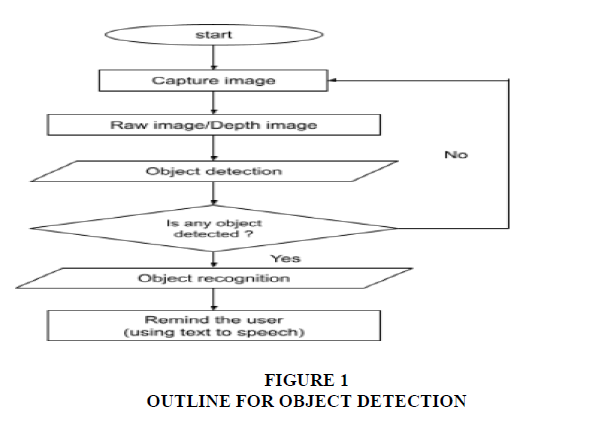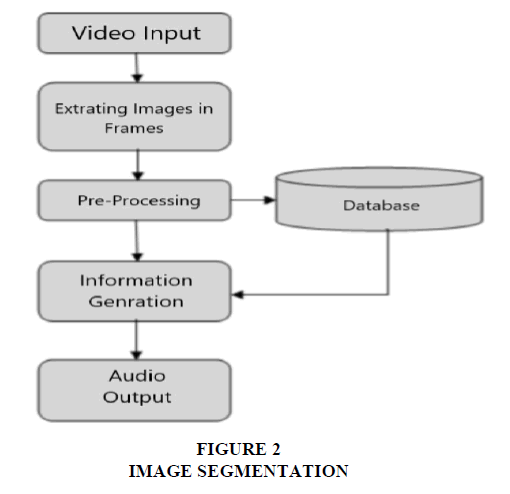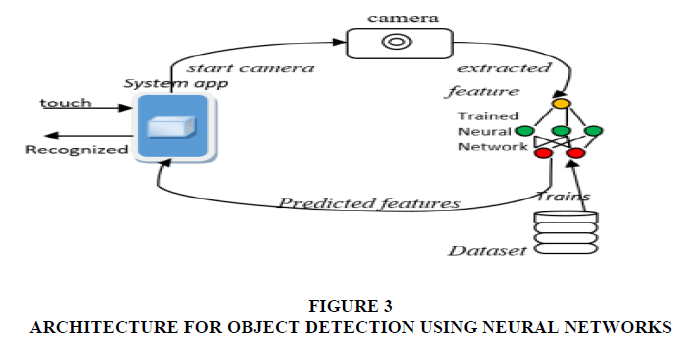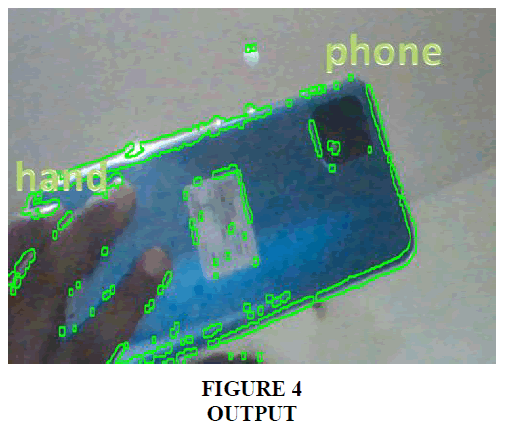Review Article: 2022 Vol: 26 Issue: 4
An Empirical Study on Development and Marketing of Object Detection for Blind People Using Artificial Intelligence
Venkata Ramana J., Koneru Lakshmaiah Education Foundation
Pavan Sai G., Koneru Lakshmaiah Education Foundation (KLEF)
Praisey Yaricherla, Koneru Lakshmaiah Education Foundation (KLEF)
Citation Information: Ramana, V.J., Sai, P.G., & Yaricherla, P. (2022). An empirical study on development and marketing of object detection for blind people using Artificial Intelligence. Academy of Marketing Studies Journal, 26(3), 1-6.
Abstract
Today, there are different systems on the market that aim to help Visually Impaired People to gain more independency and self-trust. According to WHO, the total Visually Impaired People in India reported till 2021 October is 2.2 billion? The evolution from classic white cane to several intelligent devices was in hand to guide people with vision problems. In it, the mobile technology advancements had a greatest impact in people’s daily lifestyles and it has led to high demand for developing a software application which can be more useful to a person with vision problems. Mobile applications which appear for vivid on a mobile phone are not accessible for visually impaired people at first. To fathom this inconvenience, several advancements in application came across to make it user friendly in assistive technology for visually impaired people. This exploratory review tries to provide findings to this project to identify objects by using their mobile phones. This exploratory review method is also used to assemble and review the present state of analysis with relevance to real time video object recognition for blind people on cellular platforms. Overall, this paper has covered many articles which were published in Science Direct, IEEE Explore and Research Gate; the articles selected are between 2017-2021. This paper is based on an assistive mobile application which detects the real time motion object detection and gives a voice message in Telugu and English languages to a person whenever there is an object in-front of them. Also the paper aims to suggest the marketing strategies to promote such products to the blind and needy people
Keywords
Visually Impaired, Software Application, Object Recognition, Assistive Mobile Application, Marketing Strategies.
Introduction
Healthcare is a field that has been showing great advances with the help of growing technological innovations. Use of information technology in the field of medicine has proven that it can be utilized for the development of alternatives for people with disabilities. For instance, programmable single-chip microcontrollers with essential kits integrated with user interfaces provide an amazing set of tools and platform to build VCR’s that can identify and sway the objects in the real world. Likewise, we can use the available tools and technologies to develop devices that can help people with physical disabilities Bodla et al. (2017).
With the help of the cutting-edge technology, the blind can be supported. The proposal is executed through Android mobile application which focuses on vitality by recognition of image. This application is proficient to aid using voice articulation in order to identify the objects in the surroundings, as they perform text mining to identify the text in the physical document. It can be a productive way that blind people will communicate with others and may help them to live an independent life Parekh et al. (2014). The object identification area is being hiked in the past few years and became as a widely known computer vision approach for identification of real time objects. Object recognition may look easy process for humans but when it comes to computers it is an typical task, because the machine needs to understand the human language for that it consists of a bit-by-bit process for acknowledgment, identification, and pointing the objects with an capture for a given level of accuracy. Basically identification consists of categorization as well as discernment. Where these objects can be further classified into their specific classes by enacting mainly three steps they are: feature scaling, segmentation, and categorization on the objects. In categorization, the algorithm identifies object class with a degree of confidence. After categorization, we come to the point that exact class of the objects from which that object belongs.
Literature Review
Kurian, (2011) we referred this paper and the paper mainly addressed some of the important techniques in object detection and object recognition. The paper mainly focused on object recognition in computer vision Parekh et al. (2014). The paper mainly focused on detection of moving objects. They introduced new algorithm for the moving objects Bolaz et al. (2017). They introduced the code for object detection in few lines of code. We referred the code for our research work and we used some datasets. Sandeep Kumar, Aman Balyan and Manvi Chawla provides an overview of machine learning models and focus on the application of object detection which are key challenges in formating video to image in computer vision model. A Versatile Personal Assistant Dedicated to B/VIP Paul Costache1 most of the object detection systems are very expensive in market but this paper provides that how can we built a detection application in very low cost. They are also mentioned that how we can use google maps for the object detection. A Systematic Literature Review of the Mobile Application for Object Recognition for Visually Impaired People Zulfadhlina Amira or Hisham et al. (2020) provides that how the mobile applications are used in the object detection and them survey provides lot of information for object detection in mobile application using mobile camera. Kumar et al. (2013) deals with the voice based recognition and real time assistance by using GPS and object detection by using sensors and GSM. Code reference for object detection we take the code reference for to build the algorithm. The code helps to build the algorithm. Kumar (2017), A. Abinaya discussed about the object detection and how it is useful for the visually impaired people.
Research Methodology
The proposed system of object detection is utilized in a way that it requires a numerous processes extracting through image frames to the identified output in the segmented image. As the visually impaired people are mostly favorable to strike the obstacles rather than the people with good sight, so in order to avoid maximum number of obstacles we need some form of assistance to inform the people with bad sight More et al. (2020) It is not always possible that physical assistance from animals or from human beings is safe. To avoid such situations we need some virtual assistance which can make VIP people independent and also helps them to save time and no guilty feeling that others may suffer because of them. So it will always be a best option to seek help from technology to protect the person and having very less rate of getting hurt Figure 1.
Objectives of Research
1. To develop an object classifier.
2. To collect and access all the required data.
3. To identify the real time objects by using programming languages.
4. To apply suitable machine learning technique and to convert the identified object into text.
5. To suggest the strategies for marketing the product / service.
Research Gap
In the present technical world, there are existing applications based on the mobile application for assisting the blind people Latharani et al. (2011). But After analysis from the research papers which are related to object detection and identification for visually impaired people, we came to conclusion that there’s lots of work which have already been done in this field but we haven’t found any model which is suitable for low computation devices like a mobile phones without any sort of dependencies. The models which are present in this research papers either require additional hardware or server connectivity because they are using algorithms that require faster processing devices like GPU. They should have used the algorithms which can easily work on a low computation device Figure 2.
Image Segmentation
The foremost thing we need to do is to develop a program which can enable the camera and pre process the image. So to achieve that task we need to develop a python code in jupyter notebook under anaconda platform Venkata et al. (2019). To work on that code we need some of the in-built packages like cv2, neural networks, SVM to make our work easy. These packages help to open the camera and segment the objects Ramana & Sridhar (2019). For pre processing of images we have used SVM, Contours and gray scale. After using these packages and methods we can be able to open the camera and segment the image Tijtgat et al., (2017). To read the image we have used coco dataset for which we need to work on Keras, CNN, image AI, etc.. by implementing these methods we can finally identify the real time object with an object name mentioned Figure 3.
Data Analysis
Findings
The following aspects have been explored as gaps from the above program Figure 4.
1. Every detection app is in English language only.
2. Hard to find the moving objects.
3. In our research we have found that it is difficult to trace the long distant objects.
Conclusion
It is concluded that, machine learning in detecting the object is a main technique in dealing with, positioning of object, scale transformation and the lighting. The object detecting systems acknowledge the presence or the absence of the objects in certain places and the camera angles. Finally, this paper need to make a future analysis of the challenge that are facing in object detection based on machine learning and Artificial intelligence, and gives some solution for the problem.
With respect to the marketing such products, the target market is a specialized and Niche Market for which different marketing strategies are to be used such as,
1. Targeting the blind schools, colleges, institutions etc.. and providing a demonstrations on the product.
2. Adapt images for accessibility by color blind individuals.
3. Include blind actors and models in your marketing materials.
4. Optimize your website.
References
Bodla, N., Singh, B., Chellappa, R., & Davis, L. S. (2017). Soft-NMS--improving object detection with one line of code. In Proceedings of the IEEE international conference on computer vision (pp. 5561-5569).
Hisham, Z. A. N., Faudzi, M. A., Ghapar, A. A., & Rahim, F. A. (2020, August). A Systematic Literature Review of the Mobile Application for Object Recognition for Visually Impaired People. In 2020 8th International Conference on Information Technology and Multimedia (ICIMU) (pp. 316-322). IEEE.
Kumar, S., Balyan, A., & Chawla, M. (2017). Object detection and recognition in images. International Journal of Engineering Development and Research, 5(4), 1029-1034.
Kumar, M. N., & Usha, K. (2013). Voice based guidance and location indication system for the blind using GSM, GPS and optical device indicator. International Journal of Engineering Trends and Technology (IJETT), 4(7), 3083-3085.
Latharani, T. R., Kurian, M. Z., & Chidananda Murthy, M. V. (2011). Various object recognition techniques for computer vision. Journal of Analysis and Computation, 7(1), 39-47.
More, A., Gayakwad, T., Suryawanshi, M., Kshirsagar, S., & Deole, P. ANDROID APPLICATION FOR VISUALLY IMPAIRED PEOPLE BASED ON AI TECHNOLOGY.
Parekh, H. S., Thakore, D. G., & Jaliya, U. K. (2014). A survey on object detection and tracking methods. International Journal of Innovative Research in Computer and Communication Engineering, 2(2), 2970-2978.
Ramana J.V., Sridhar P. (2019), ‘The movement of industrially applicable yellow metal and its impact on global currencies’, International Journal of Recent Technology and Engineering, 8(3), PP.7066-7070.
Tijtgat, N., Van Ranst, W., Goedeme, T., Volckaert, B., & De Turck, F. (2017). Embedded real-time object detection for a UAV warning system. In Proceedings of the IEEE international conference on computer vision workshops (pp. 2110-2118).
Venkata Ramana J., Hanuma Reddy D., Venkateswara Kumar K.S., Sirisha K. (2019), ‘An empirical study on marketing of handloom fabrics in Andhra Pradesh (A case study with reference to Guntur district)’, International Journal of Innovative Technology and Exploring Engineering, 8(8), PP.1071-1075.
Received: 04-May-2022, Manuscript No. AMSJ-22-11993; Editor assigned: 06-May-2022, PreQC No. AMSJ-22-11993(PQ); Reviewed: 22-May-2022, QC No. AMSJ-22-11993; Revised: 23-May-2022, Manuscript No. AMSJ-22-11993(R); Published: 29-May-2022



